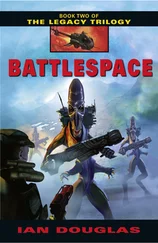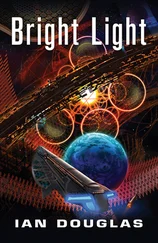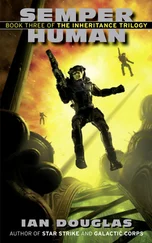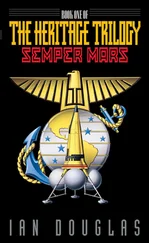1 ...8 9 10 12 13 14 ...19 But by that point, Charlie One would have been traveling at near- c for five full minutes, covering an additional 90 million kilometers, for a total of nearly 154 million kilometers.
In other words, both hunter and prey would be traveling at the same speed, but the hunters would still be almost 65 million kilometers behind Charlie One.
An ancient sailing aphorism held that a stern chase was a long chase, but it was worse than that—a lot worse. There simply was no way to close that gap. No matter how high the acceleration, the dead hand of Einstein had long ago decreed that there was no way for material objects to pass—or even reach —the speed of light. According to the math governing relativistic calculations, the faster a ship went, the more massive it became, the shorter it became along its line of travel, and the more energy was required to accelerate it, a kind of feedback effect that led to the ship acquiring infinite mass and zero length at the speed of light, thus requiring infinite energy to move it faster.
The way the universe had been put together, it simply couldn’t be done. Even with all the energy available from the vacuum, the fighters might shave a few more decimals from that 99.7 percent of c , but they could never reach c , never mind surpass it.
But there was a loophole. Interstellar travel in anything less than decades would not have been possible without it. The Alcubierre Drive had been developed 284 years earlier, a realization of principles first described by physicist Miguel Alcubierre in 1994. Using the same projected singularity technology, an Alcubierre Drive ship pulled itself into an enclosed bubble of spacetime. There was nothing in physics that said that such a bubble couldn’t travel faster than light; indeed, in the earliest instants after the big bang, during the inflationary epoch, space itself had increased in volume by an estimated 10 78times in 10 -30seconds—which meant that points within that expanding volume would be moving away from one another at many, many times the speed of light. A starship imbedded inside that spacetime bubble would be motionless relative to the space immediately around it, and therefore would not violate the ultimate-speed law of the cosmos.
Alcubierre Drive had several key limitations, though. For one, a ship was effectively “alongside space,” and therefore unable to communicate or interact with anyone in “real space” until it emerged. Another—and the one Connor was focusing on at the moment—was that a ship needed a fairly flat gravitational metric when the drive was engaged. Shipbuilders had been working on that problem for centuries, with no discernable results. So a ship still couldn’t go into faster-than-light drive until it was eight to ten AUs out from a star of Sol’s mass—the distance, roughly, of Saturn at its farthest from Earth.
No, the real problem was that none of this necessarily applied to Charlie One. It was an alien ship, of unknown potential and technologies. For all any human knew, it might pop into Alcubierre Drive in the next few seconds, or within a couple of million kilometers of the sun. Connor decided, however, that that was extremely unlikely. If they could have done it inside of one astronomical unit, they would have done it by now. The fact that they hadn’t led Connor to speculate that they were aiming for a particular patch of sky, that they would continue accelerating past Sol and out into the outer system before engaging their FTL drive.
So the million-dollar question is, just what part of the sky might that be?
It was simple enough to superimpose a star chart over her fighter’s navigational data.
And the answer to her question was … surprising.
29 June, 2425
Emergency Presidential Command Post
Toronto
United States of North America
0044 hours, EST
“The fighters are in pursuit, sir,” Admiral Armitage told Koenig. “They won’t catch the damned thing, though. Not unless either Charlie starts decelerating or they can shave another tenth of a percent off their velocity.”
“How good are the new designs at that sort of thing?”
“Mostly depends on the pilot,” Armitage said. “Things are happening awfully fast at those velocities, remember.”
Koenig nodded. He’d been a fighter pilot once, a very long time ago. “I do.”
As a fighter moved faster and faster, relativistic phenomena not only increased the vehicle’s mass, pushing it toward an impossible-to-reach infinity, but it also shortened the rate at which time—as measured by an outside observer—passed for the pilot, an effect called time dilation. The pilot experienced everything—the increase in mass, the compression of time—as perfectly normal; it was outside observers that saw basic constants of the universe shift and flow like water.
For fighters traveling at 99.7 percent of the speed of light, one minute objective—a minute as perceived by slowpoke left-behinds—was only 4.64 seconds. To observers back on board the carrier, the pilot would seem to be moving and speaking and living with extreme slowness.
The difference could be significant—and a real problem, especially in combat. Where a relatively stationary target had a minute to react to oncoming fighters, those fighters had only a few seconds. The best cybernetically augmented reaction times in the world couldn’t handle differences at such scales.
In fact, getting anything done when you were up against an unaccelerated opponent was dangerous when a decision or an action taking a handful of seconds was in fact a whole minute long outside of the pilot’s frame of reference. At least, Koenig thought, in this case both the fighters and their quarry were pushing c , and the time difference between their relative frames of reference was trivial.
That was one reason that fighters sent at relativistic speeds toward an enemy target generally decelerated before reaching their objective. Speed was life, as the old fighter-pilot aphorism had it. But in modern space-fighter combat, too much speed could put you at a serious disadvantage.
With all that in his mind, Koenig pulled down an in-head schematic from the America showing the relative positions and speeds of the alien vessel and the pursuing fighters. He began pumping through some simulations. If the fighters could increase their velocity by an additional tenth of a percent of c , their speed, relative to their quarry, would be 30,000 kilometers per second and closing.
At this point, the fighters would be trailing the enemy by …
He let the calculations run themselves through: 65 million kilometers. With a closing velocity of 30,000 kps, that meant an intercept in another thirty-six minutes.
Like a dog chasing a hovercraft, though, what they would be able to do with the alien once they actually caught it was still unknown.
And it was still all based on the “if” of moving closer to the speed of light.
USNS/HGF Concord
4-Vesta
0056 hours, TFT
Commander Terrance Dahlquist read the message as it came through, direct from Admiral Gray and the star carrier America . He wasn’t quite sure how he should feel about this … or what he was going to do about it.
Originally a branch of the North American military, the High Guard had been established in the wake of the Wormwood Incident in 2132, when a rogue Chinese squadron had dropped a small asteroid into the Atlantic Ocean. Later, official control had been handed over to the Earth Confederation, since it was operating in the defense of the entire planet. Concord ’s mission was to monitor operations near asteroids, and to stop unauthorized attempts to manipulate their trajectories. In those cases where either asteroids or ore samples were legally being injected into Earth-approach orbits, the Guard tracked them, double-checked the calculations, and tried to make certain that Earth or other population centers across the solar system weren’t endangered.
Читать дальше












